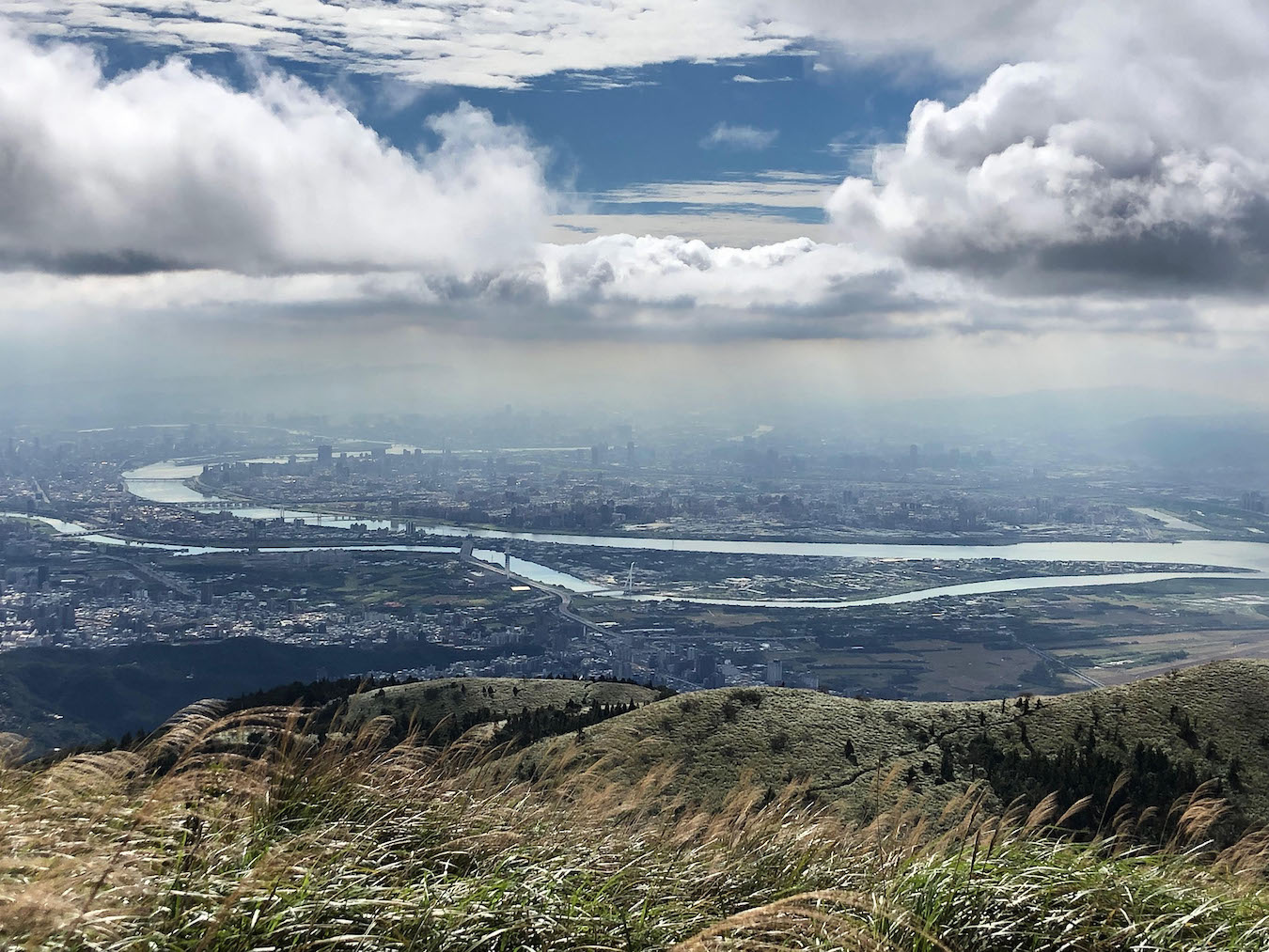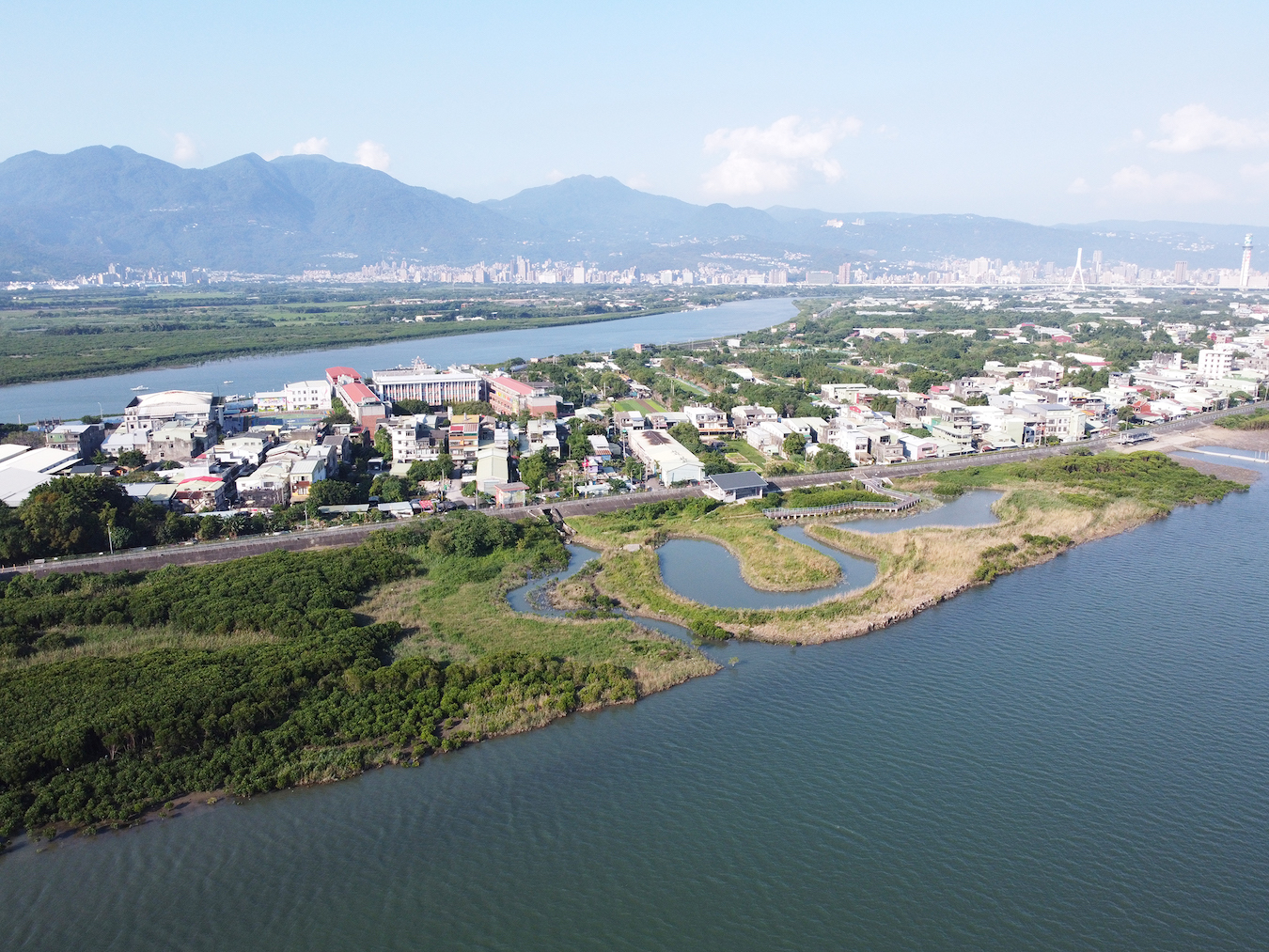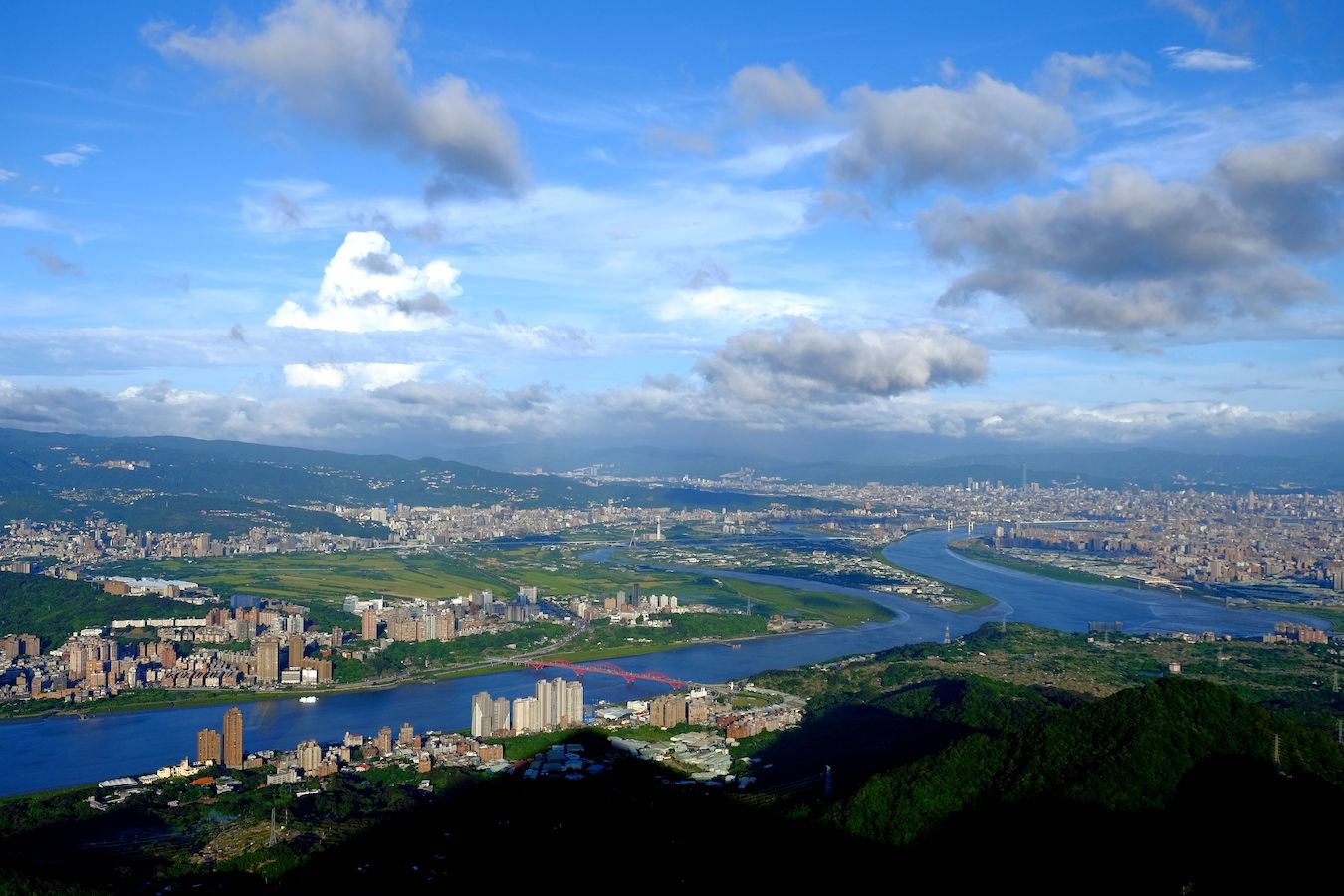by Aaron Su
語言:
English
Photo Credit: MiNe/Flickr/CC BY 2.0
IN EARLY MARCH, in the continuation of what has been a decade-long clash between Shezi Island (Shezidao) citizens and the Taipei City government, another round of protests on the peninsula was provoked by a visit from the administration of Chiang Wan-an, the new KMT mayor of Taipei.
The sandbar, located on the outer edge of Taipei City between the Xindian and Keelung Rivers, saw catastrophic flooding during the 1953 Typhoon Kit, and since 1970 the city has tightly restricted development on this flood-prone area. However, populated by (registered, tax-paying) local settlements, factories, and small agricultural plots, the peninsula and its residents have recently been targeted for urbanization under an “ecological development” principle, engendering significant tensions. Former KMT mayor Hau Lung-pin, as part of his 2010 election bid, even claimed that he intended to turn Shezidao into “Taipei’s Manhattan,” launching the contemporary wave of anxieties over unethical development at the expense of citizens’ desires.
This month’s most recent protests attacked the very premises of the Chiang administration’s visit to the peninsula: a “briefing” or “explanation session” (說明會) for the alluvial plain’s expropriation. The Shezidao Self-Help Association claims that the framing of this “explanation session” already assumes cooperation by local residents on a development plan hotly contested since before Chiang took office. In 2016, the Taipei City government held an “i-Voting” process for residents to assess their preference for one of three development plans, during which the “ecological” track was selected for the peninsula. Yet lingering frustrations clearly indicate that the voting process and its democratic veneer did not fully match up with public anxieties. Worries over land speculation, the evacuation of over 11,000 from their homes, and the inefficacy of massive projects to solve flooding issues are just some critiques of the city’s plan.
 Photo credit: Vickie399/WikiCommons/CC BY-SA 4.0
Photo credit: Vickie399/WikiCommons/CC BY-SA 4.0
Among other requests—like refusing land speculation and mass construction on Shezidao—residents are calling on the Chiang administration to fulfill their democratic promises by renegotiating and communicating on egalitarian terms with them, rather than imposing a plan instated by prior mayors. Appealing to the principles of a representative government, spokesperson of the Shezidao Association Lee Hua-Ping emphasized that Taiwan’s democratic society entails the necessity for the establishment of a thoroughly “democratic urban planning system” in order to “restore land development rights that we already had back to the people.” Lee even insists that the current plan violates standards that Taiwan has adopted for “international human rights,” asking the government to reflect on these constitutional duties.
Given the inefficacy of the i-Voting process and continued negotiations over government plans and local needs, Shezidao is a useful case to think about what democracy ought to look like in practice in Taiwan. A country that prides itself on a fully-fledged participatory democracy, Taiwan is replete with design and development projects, as well as budgeting schemes, that engage citizens’ opinions and contributions through voting processes. Participatory budgeting is extremely common in the administration of programs from social welfare and religious institutions to Indigenous community organizations and all over the country, and participatory design initiatives can be found everywhere from social housing in Nangang to Hakka cultural centers in Hsinchu’s Xinpu Township.
But what are the issues unsolved by current plans for community-centered, participatory design? And how do these reflect the future limits and possibilities of Taiwan’s democracy? Jeffrey Hou, a landscape architecture professor with expertise on civic design and community empowerment, has researched Shezidao’s tensions over the years and shares his insights about Shezidao and democracy in Taiwan with us below.
Aaron Su: The continued protests over the redevelopment of Shezidao in spite of the seemingly participatory “i-Voting” process in 2016 (in which residents selected a plan for an ecologically-informed design strategy for the peninsula) raises questions about what “participation” really means in the urban design process. Your work, from Oakland and Seattle to Taipei and Matsudo, has examined and critiqued decades of community-driven design efforts: can you illuminate what practices might constitute true “public engagement” for Shezidao?
Jeffrey Hou: For public engagement to be meaningful, the process needs to be accountable, and citizens must be able to make their own choices. The “i-Voting” process for Shezidao in 2016 was flawed from the perspectives of accountability and self-determination.
First, it gave a false impression of democratic decision-making. The choices for the voters to select from during the i-Voting were dictated by the Taipei city government, and the alternatives were also not significantly different from each other! All require “zone expropriation” that turns properties owned by current residents into parcels for developers.
Secondly, low turnout represented another issue. Although both local stakeholders and city residents at large are eligible to vote, only 35.16% of the local stakeholders and less than .1% of the city’s population actually voted. In contrast, under the city’s current process, a proposed public redevelopment project requires agreement from at least 90% of the property owners. The process is therefore [clearly] not accountable to the majority of the local stakeholders as well as city residents.
 Photo credit: MiNe/Flickr/CC BY 2.0
Photo credit: MiNe/Flickr/CC BY 2.0
AS: What do you think are the unique struggles and opportunities for civic urbanism in Taiwan? Are there particular political, bureaucratic, or economic factors that influence prospects for community design in Taiwan?
JH: The challenges facing public engagement and community design in Taiwan are common in emerging and newly democratized societies. These include institutional arrangements that remain top-down, without meaningful opportunities for participation in decision-making. The public engagement processes are primarily procedural, lacking mechanisms for accountability.
Preoccupations with economic development remains a strong factor often at the expense of public engagement and accountability. Local community leaders often have strong ties with political factions. While these challenges do have local characteristics, they are not particularly unique to Taiwan. More often than not, community design practices are co-opted to serve the interest of the authority.
The public workshops organized by the City in Shezidao in 2021 represent one example. [Taipei city] leaders made false claims about the workshop outcomes to justify the proposed redevelopment.
AS: Because Shezidao is a flood-prone sandbar home to thousands of local settlements, the government’s evictions and plans for land development and speculation are often justified to residents under the banner of “environmental” reconstruction or restoration. Do local residents have their own infrastructures and notions of adaptation, and how can these be amplified for policymakers and design experts?
JH: Shezidao has had issues with flooding which led to the construction moratorium starting in the 1970s. However, frequent flooding has largely been resolved with the flood diversion project upstream completed in 2004 which has significantly reduced the frequency and intensity of floods.
In the future, rising sea levels and climate uncertainty may pose new challenges. These concerns actually make the proposed redevelopment with an increased density even less convincing and more problematic. Raising the height of the flood wall as currently proposed would only increase the risk during a large storm event.
There are many other solutions to flood mitigation and management that are not considered under the current proposal. In fact, the current situation with relatively low building density and an abundance of farmland is already an adaptive strategy.
EXAMINING THE 2016 i-Voting system used to finalize the Ecological Development initiative for Shezidao, as well as several Stakeholder Workshops held by Taipei City’s Public Participation Committee toward the end of mayor Ko Wen-je’s term in 2021 and 2022, Hou further discusses how these workshops are more about the government’s “eagerness to move the project forward” through establishing credibility and trust with residents rather than opportunity for “open dialogue and exchange.”
Small thematic sessions on “environmental improvement” (環境改善), “social care” (社會關懷), “diverse relocation” (多元安置), and “economic revitalization” (產業活化與再生) alongside an “open listening session” (我有話要問/說/寫) certainly allowed residents to voice their opinions within the contained space of the workshop; however, Hou indicates that comments made by the city leaders following the workshops practically derailed the process and eliminated any remaining hope for reconciliation.” City leaders concluded that the majority of workshop participants were in support of “zone expropriation,” when in reality, no such survey was conducted.
 Photo credit: TaiwanKengo/WikiCommons/CC BY-SA 3.0
Photo credit: TaiwanKengo/WikiCommons/CC BY-SA 3.0
These issues found in the process of participatory development—issues that still linger to this day, as seen by this most recent round of protests—pose questions but also opportunities to brainstorm the future of Taiwan’s community engagement processes. Hou indeed recommends some concrete strategies and changes that can improve the seeming inefficacy of community-guided development efforts. To start, he says, we do need to acknowledge how existing programs “still reflects a largely technocratic approach to urban planning and development,” where the only thing that is sought is “blessing from the stakeholders” through forums and sessions that otherwise ignore their real opinions on the development process.
Furthermore, “a system with due process and accountability needs to be established that prevents manipulation and tokenism,” as well as “further training of the staff (and city leaders) on participatory ethics and techniques”: with these changes in mind, Hou hopes to be able to witness future projects that truly carry forward the ethos of Taiwanese democracy to the design process.
In the face of claims that Shezidao remains “an untapped diamond that has yet to be developed,” using these concrete means to gather, learn from, and elevate public opinion will be essential in allowing the government and as well as non-Shezidao residents to further grasp the importance of public sentiment in the participatory design process.
Jeff Hou is Professor of Landscape Architecture and director of the Urban Commons Lab at the University of Washington, Seattle. His work focuses on the intersection of placemaking and civic empowerment.

